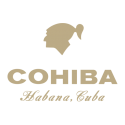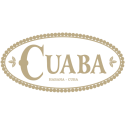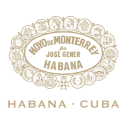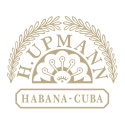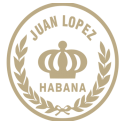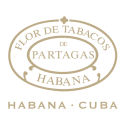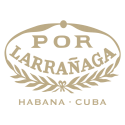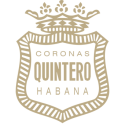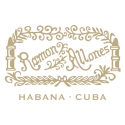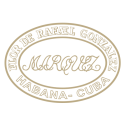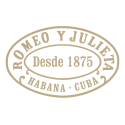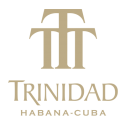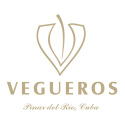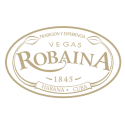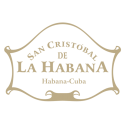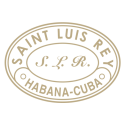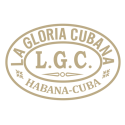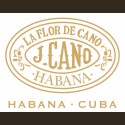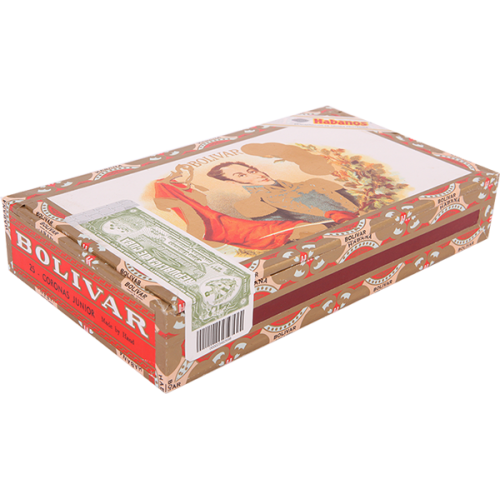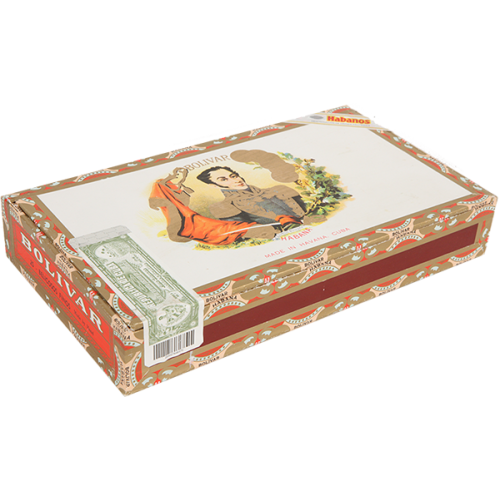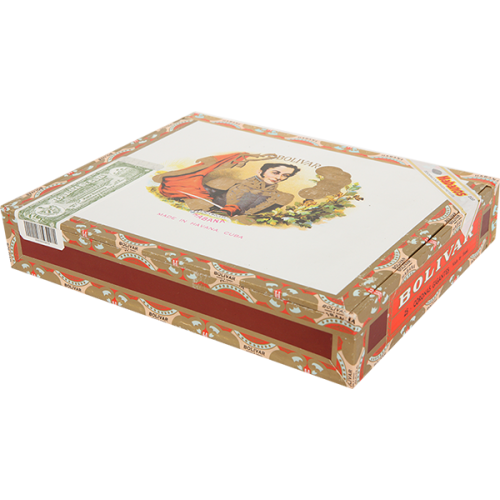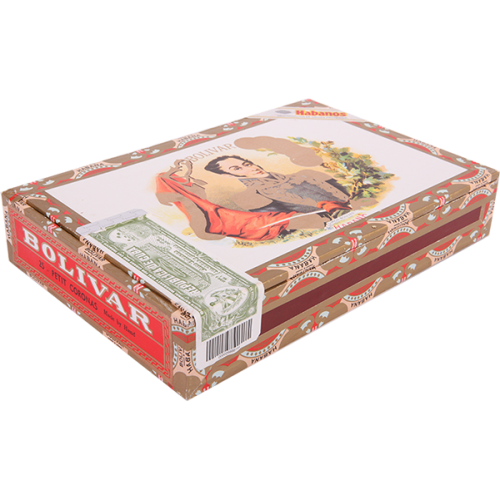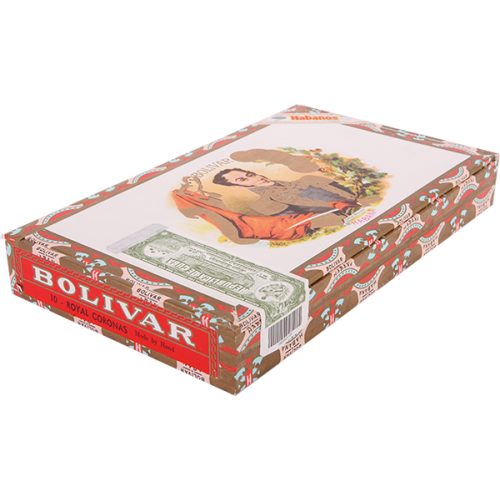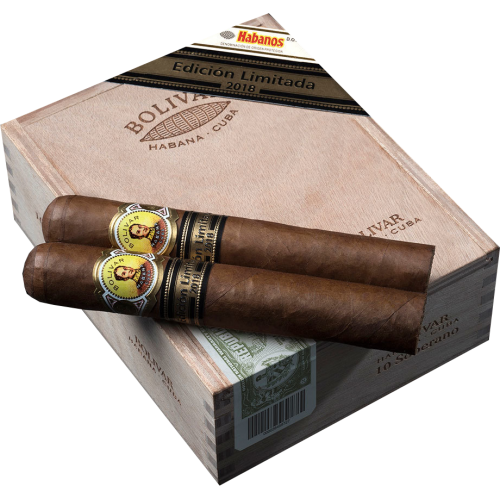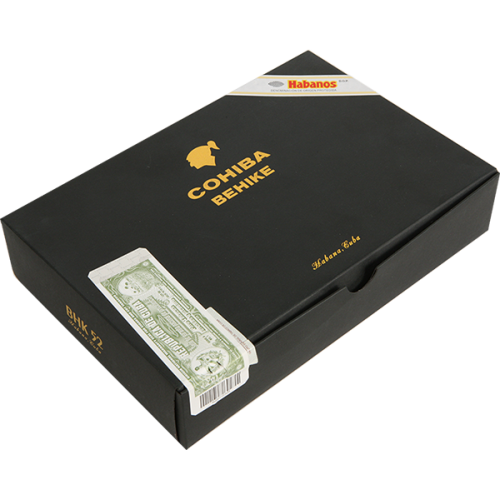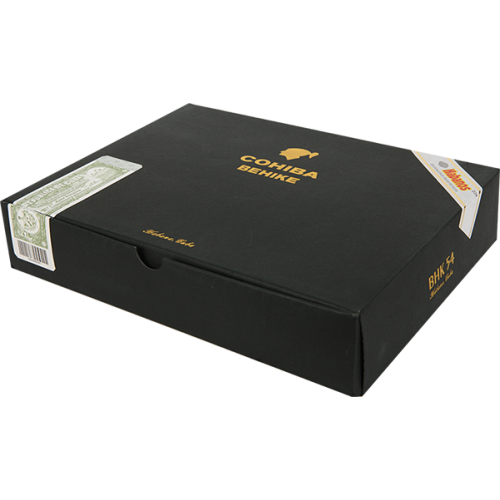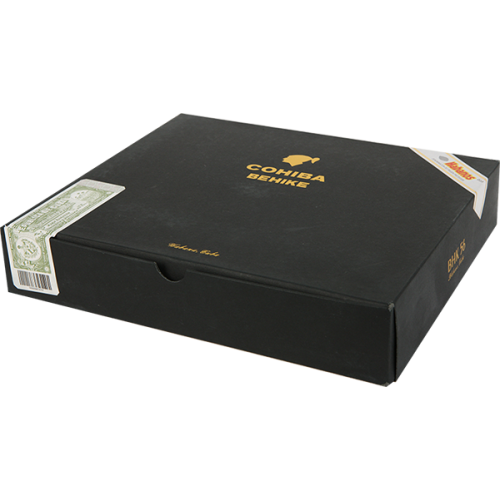No products
Catalog
Standard There are 278 products.
-
Bolivar
Simón Bolívar was one of the great historic figures of the 19th Century who liberated much of South America from Spanish rule.
The Bolívar brand was created in 1902 and is based today at the Partagas factory in the heart of Havana. It is perhaps not surprising that a Habano named after such a powerful figure is blended to match his might.
Bolívar is among the strongest, most full bodied of all Habanos. It boasts an unrivalled richness of flavour in its blend of Vuelta Abajo zone filler and binder tobaccos that makes it one of the most sought-after marques amongst experienced smokers. -
Cohiba
Cohiba is the flagship brand of Habanos.
It was created in 1966 for President Fidel Castro himself and was made at the then top secret, but now world famous, El Laguito factory. At first, it was only seen outside Cuba as gifts for heads of state and visiting diplomats.
Since 1982 Cohiba has been available in limited quantities to the open market.
-
Cuaba
Every Cuaba is made in the distinctive shape known as double figurado, the style that at the end of the 19th Century was all the rage for Habanos. A century later, in 1996, this rich tradition was revived at the Romeo y Julieta factory.
Double figurados are at the pinnacle of the cigar maker’s art and for this alone they merit a place in every cigar enthusiast’s collection.
At the start Cuaba offered just four comparatively small sizes. However since 2003 three much larger vitolas, the Distinguido, the Salomón andthe Diadema, have been released as part of the standard range. -
Diplomaticos
Diplomáticos is a comparatively recent brand dating from the 1960’s. It bears a marked resemblance to Montecristo, using numbers not names to describe its sizes.
All sizes are Tripa Larga, Totalmente a Mano – long filler, totally hand made – using a blend of filler and binder tobaccos from the Vuelta Abajo zone. -
Hoyo De Monterrey
Hoyo de Monterrey owes its origin to the town of San Juan y Martínez , which lies at the heart of the Vuelta Abajo tobacco zone. Here the Hoyo de Monterrey plantation, one of the great Vegas de Primera , can be reached through a gate on the town’s main square inscribed ‘Hoyo de Monterrey. José Gener. 1860’.
‘Hoyo’ literally means a ‘hole’ and in this case describes the low-lying position of the plantation on the fertile banks of San Juan y Martínez river. José Gener, a Spaniard from Tarragona, first used the name of his vega on a brand of Habanos in 1865.
The flavour of Hoyo de Monterrey’s blend makes it an attractive choice for those who seek a delicate yet aromatic Habano that is lighter to the taste but with great elegance and complexity. -
H.Upmann
Herman Upmann was a banker from Germany who so loved Cuban cigars that he moved to Havana in 1844 and set up as both banker and cigar maker. His bank closed in the early 1920’s but his cigars live on as a fine example of an elegant, light to medium flavoured Habano.
H. Upmann’s blend is composed exclusively of filler and binder tobaccos grown in the Vuelta Abajo zone.
Gold medals in no less than eleven international exhibitions during the 19th Century can be found on the brand’s labelled boxes.
Characterized by its light to medium flavour, amongst the best known H. Upmann sizes are the Magnum 46 and the Magnum 50, which was introduced in 2008. Other important sizes include the Sir Winston, the Connoisseur No. 1 and in small vitolas the Corona Junior and the Half Corona, which was introduced in 2011.
-
Jose L.Piedra
José L. Piedra is a particularly noteworthy Habano not only because its blend is composed of filler tobaccos grown exclusively in the Remedios tobacco region, but also because it is made using the Totalmente a Mano, Tripa Corta, or ‘totally hand made, short filler’technique.
The Piedra family came to Cuba in the 1880’s from the Spanish province of Asturias. They settled near the town of Santa Clara, which lies at the heart of the Remedios region where tobacco has been grown since the 16th Century, and
started to make cigars.
The family’s second generation led by José Lamadrid Piedra, whose name is commemorated today, founded and developed the brand. -
Juan Lopez
A Spanish businessman named Juan López Díaz founded his brand in the 1870’s.
Although little known around the world today, Juan López has always attracted a following amongst aficionados of Habanos particularly for the Selección No.1 and, most notably, for the Selección No.2 sizes.
The range offers a consistent medium to full flavour based on a rich blend of filler and binder leaves from the Vuelta Abajo zone and all the sizes are Tripa larga, Totalmente a Mano – long filler, totally hand made -
Montecristo
Montecristo is the best known and probably the most appreciated brand of Habanos throughout the world. It forms the benchmark for many Habanos smokers against which other brands are judged.
The name comes from the hero of Alexandre Dumas’ famous novel ‘The Count of Montecristo’, which was a firm favourite when read by the Lector to the Torcedores (cigar makers) at the factory where it was founded in 1935.
-
Partagas
If there is one particularly famous cigar factory in Havana, it is Partagas. You can find it at No. 520 Industria Street, just behind the Capitol building, in the heart of the city. The factory was opened in 1845 by Don Jaime Partagas and it has been making the cigars that bear his name ever since.
A Partagas is immediately recognisable by its deep, earthy flavour. The character of its blend springs from a selection of filler and binder tobaccos grown in the Vuelta Abajo zone and chosen for their unmistakable richness of flavour and aroma.
-
Por Larranaga
Por Larrañaga is a brand with a long history. Founded in 1834 it enjoys a well-earned reputation for its consistency and good presentation.
All the filler and binder tobaccos in Por Larrañaga come from the Vuelta Abajo zone. The range includes cigars made using both the Tripa Larga, Totalmente a Mano – long filler, totally hand made – technique, and the Tripa Corta,Totalmente a Mano – short filler, totally hand made – method. The short filler size also incorporates tobacco leaves from the Semi Vuelta zone. -
Punch
Punch is one of the very oldest Habano brands. Don Manuel López of Juan Valle & Co founded it in the mid 19th Century with an eye to the booming British market where a humorous magazine of the same name was much in vogue.
A contented Mr Punch, the clown who personified the magazine, is still featured in every box, cigar in hand, and surrounded by 19th Century images of cigar making that remain virtually unchanged over a century and a half later.
In 1931 the Punch became associated with Hoyo de Monterrey and the two brands have been made at the same factory ever since. Today the factory is La Corona. -
Quintero
Quintero’s smooth, medium bodied taste makes it ideal for those seeking to experience the flavour of Habanos at an affordable price.
It is one of the few Habanos brands not born in Cuba’s capital city, Havana. Instead its founder Agustin Quintero with his four brothers set up shop in the south coast city of Cienfuegos, known as the “Pearl of the South”. All the tobaccos selected for Quintero’s filler blend come from Vuelta Abajo and Semi Vuelta zones.
All Quinteros are made using the Tripa Corta, Totalmente a Mano – short filler, totally hand made – technique. -
Ramon Allones
Ramón Allones is one of the big names in the history of Habanos.
Founded in 1837, it is also one of the oldest brands still in production.
A Galician by birth Ramón Allones was the first cigar manufacturer to pack his Habanos in boxes decorated with labels and stamped with his brand’s emblem. He was the pioneer of the packaging tradition that we know today.
All the sizes are filled with a blend of filler and binder tobaccos from the Vuelta Abajo zone, characterised by their intense and complex taste. -
Rafael Gonzalez
Rafael González was created in the 1930’s.
It was in this brand that the 61⁄2 inch (165mm) by 42 gauge cigar, which has the factory name of Cervantes, was first called a Lonsdale after Lord Lonsdale, the famous English sporting Earl and cigar aficionado of that period. Now many other brands use the name as well.
On its lid label each box carries a curious inscription written in English to the effect that the cigars should be smoked within one month of the date of shipment from Havana or otherwise they should be carefully matured for about one year. -
Romeo Y Julieta
Named after William Shakespeare’s tragic lovers, the origins of Romeo y Julieta as a Habano date back to 1875.
The brand rose to international fame during the early years of the 20th Century under the direction of Don ‘Pepin’ Rodríguez, a talented promoter, who was amongst the first to recognise the power of the cigar band. During his hey day no less than 20,000 different bands were used in production.
Winston Churchill became a devotee of the brand. Following his visit to Havana in 1946, his name has not only been commemorated on a band but it has also served to describe the marque’s most famous size – Romeo y Julieta Churchills.
-
Rey Del Mundo
In 1882 the Antonio Allones factory, which had been making Habanos for over 30 years, decided to launch a new brand of premium quality and price. With great confidence but little modesty it was named El Rey del Mundo – The King of the World. It proved a winner.
This success lives on to this day in a selected range of Habanos renowned for its light to medium flavour and consistency.
All sizes contain a blend of filler and binder tobacco from the Vuelta Abajo zone and are made by the Tripa Larga, Totalmente a Mano – long filler, totally hand made – technique. -
Trinidad
Trinidad is named after the beautiful 16th Century city of La Santísima Trinidad (The Holy Trinity), listed by UNESCO as a World Heritage Site, which is situated on Cuba’s south coast.
Trinidad, as a Habano brand, dates back to 1969 but for many years, like Cohiba, it was made only for gifts to foreign diplomats. Not until 1998 was it released for general sale and then only in small quantities. At the start there was only one size of Trinidad: Fundadores. In 2003 three more sizes, the Reyes, the Coloniales and the Robusto Extra, were added to the range. -
Vegueros
It is a tradition in the Vuelta Abajo zone for the Vegueros (farmers) to make their own cigars. Visitors to this part of Pinar del Rio province often want to try such cigars made in the land where the best tobacco in the world is grown.
As a result, in 1996, the brand called Vegueros was introduced to the market as a tribute to the countless generations that have cultivated tobacco in Pinar del Rio. It has a special intensity in its blend that reflects the tastes of the local people.
-
Vegas Robaina
Since 1845 the Robaina family has farmed tobacco continuously on its precious vegas (fields) at Cuchillas de Barbacoa situated in the San Luis district of the Vuelta Abajo tobacco zone.
Vegas Robaina cigars were introduced in 1997 as a tribute to Cuban tobacco farmers through the figurehead of Don Alejandro Robaina whose reputation in his day for producing the finest wrapper leaves was legendary. In effect the brand honours all the anonymous tobacco growers whose knowledge and skill make Habanos what they are today. -
San Cristobal de la...
San Cristóbal de la Habana was the original name of Havana, Cuba’s capital city, when it was founded in 1519; San Cristóbal (St Christoper) in honour of the Saint of the day where the city was founded, and La Habana after an Indian name for the site.
San Cristóbal de la Habana cigars were introduced in 1999 on the threshold of the new Millennium as a tribute to the city’s long history.
-
Saint Luis Rey
Saint Luis Rey was founded just before the Second World War.
Some say that its name was taken from a Thornton Wilder play “The Bridge of San Luis Rey”, which was popular at the time. However it is more likely that it refers to the town of San Luis in the heart of the Vuelta Abajo tobacco zone, which is particularly famous for the superb wrapper leaves produced there.
Whatever the truth may be, Saint Luis Rey enjoy a reputation among Habanos lovers for the intensity of their flavour throughout the range.
-
La Gloria Cubana
La Gloria Cubana is a little known jewel amongst Habano brands.
Nevertheless it enjoys a long history. Founded in 1885, its name alone clearly defines its origin. For over a century it has attracted a small but loyal following amongst the most knowledgeable smokers.
The brand is characterized by its elegant presentation, especially in the Medaille d’Or Series.
All the vitolas are Tripa Larga, Totalmente a Mano – long filler, totally hand made. -
Quai D'Orsay
This brand owes its origin to the refined taste of the French market. Created in the 1970’s, the name is taken from a well-known street in Paris beside the River Seine.
All Quai d’Orsay sizes are made with a light tasting blend of filler and binder leaves from the VueltamAbajo zone and its wrappers are mainly distinguished by their Claro (light brown) and Colorado Claro (mid brown) colours. -
La Flor De Cano
At a medium price level, Flor de Cano cigars offer a good balance between flavour and aroma.
Today all Flor de Cano are Tripa Corta, Totalmente a Mano – short filler, totally hand made – Habanos composed of Vuelta Abajo and Semi Vuelta leaf.




